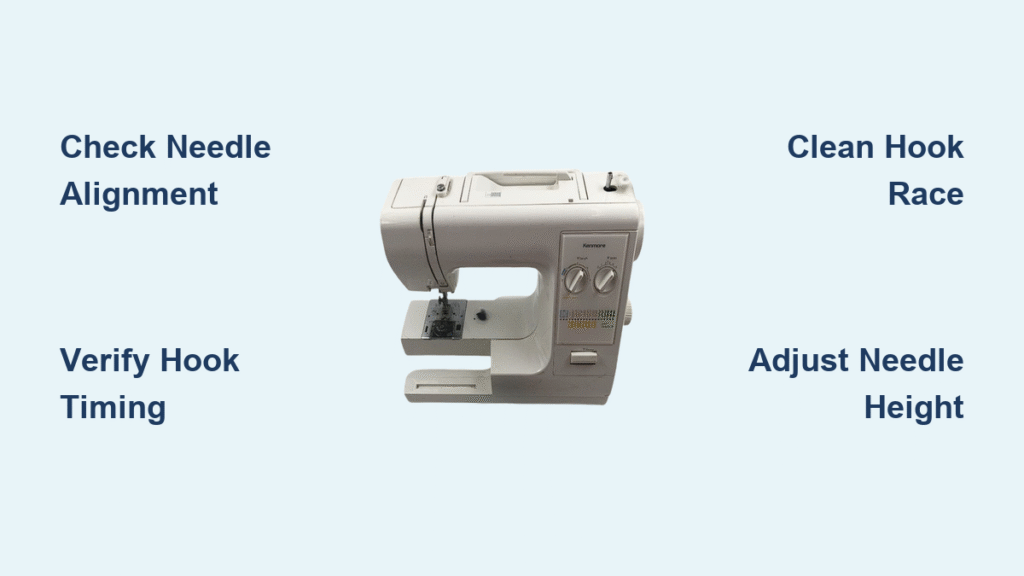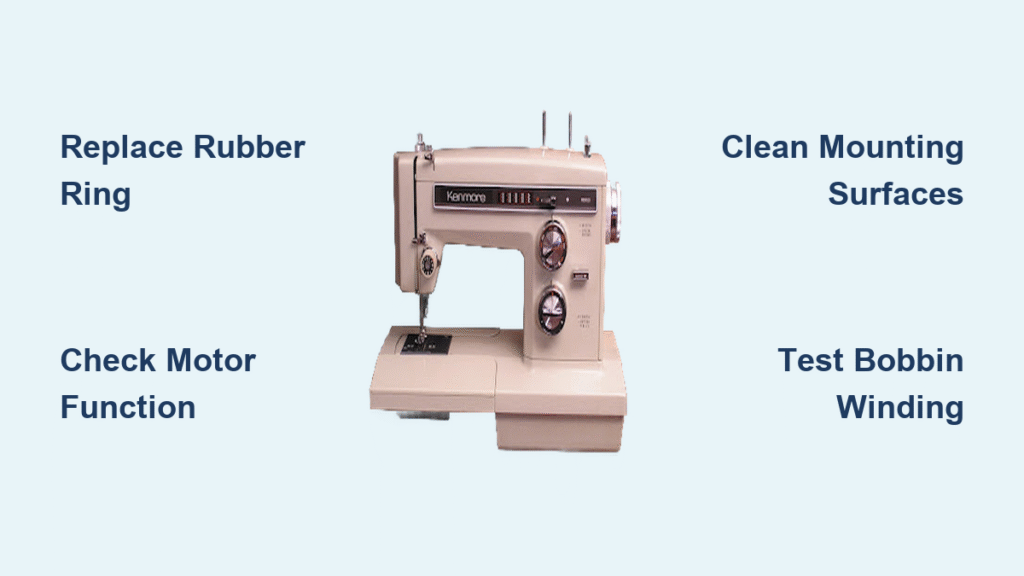Your Singer sits silent on the table, pedal pressed but needle frozen. No hum, no light, no familiar whir of stitches forming. That blank expression on your machine isn’t just frustrating—it’s derailing your project deadline. Before you resign yourself to expensive repairs or replacement, know this: most “dead” Singer machines fail due to simple, user-fixable issues in the power path. This guide cuts through the confusion with precise steps to diagnose and fix your non-starting Singer—using only basic tools and a 30-minute commitment. You’ll learn exactly where to inspect for blown fuses, how to confirm if your foot pedal is dead, and why that flickering light means your cord is failing right now.
What you’ll solve today:
– Why plugging into a different outlet solves 15% of “won’t turn on” cases
– How to spot dangerous cord damage before it sparks
– Where hidden fuses live on both vintage and modern Singers
– The 5-minute reset that bypasses electronic lockups
– When to skip DIY and call a certified technician
Confirm Your Wall Outlet Isn’t the Real Culprit
Never assume your Singer is broken when the wall outlet could be the true failure point. This single step resolves countless unnecessary panic calls. Here’s how to verify:
Immediately unplug your Singer and insert a lamp or phone charger into the exact same outlet. If the lamp doesn’t light or the charger doesn’t power up, the issue lies outside your machine. Reset any tripped GFCI outlets (common in kitchens/bathrooms) or flip the circuit breaker. Crucially, eliminate extension cords or power strips—plug your Singer directly into the wall outlet. These accessories often develop internal breaks that block power flow. If the test device works but your Singer remains dead, move to cord inspection. If both fail, solve the outlet issue first.
Why Kitchen/Bathroom Outlets Are Your Best Test Spot
These rooms typically have dedicated circuits less prone to overload. A lamp plugged here provides instant visual confirmation—no guessing if the outlet functions. Avoid bedroom or living room outlets that share circuits with high-draw appliances like vacuums or space heaters.
Inspect Power Cord for Hidden Damage

A frayed or internally broken cord is the #1 cause of total power loss. Generic “check the cord” advice fails because critical damage hides inside the insulation. Perform these targeted checks:
Conduct the Flex Test for Internal Breaks
With your Singer unplugged, run your fingers along the entire cord length. Feel for stiff sections, bulges, or sticky residue—signs of melted wires. Now plug the machine in (but keep power switch OFF) and gently bend the cord every 3 inches near the plugs and along kink points. If you see sparks or hear crackling, unplug immediately. This indicates exposed copper touching—a fire hazard requiring cord replacement now.
Secure the Machine-Side Connection
On modern Singers (2010+ models), check for a twist-lock collar where the cord enters the machine. Push firmly while turning clockwise until it clicks. A loose collar breaks electrical contact as a safety feature. For older models, ensure the plug seats fully with zero wobble. If the connection feels gritty or loose, the socket may need replacement.
Critical replacement tip: Match the voltage/amperage stamped on your old plug (e.g., “7 A 125 V”). Using an under-rated cord risks overheating. Singer part #A20161005 is a direct-fit replacement for most modern electronic models.
Locate and Test the Fuse—Your Hidden Power Gatekeeper

Most sewers don’t know their Singer has a fuse. When it blows, the machine dies completely. Finding it depends on your model:
Modern Electronic Singers (Computerized Models)
Look beside the power inlet for a small coin-slotted cap (about the size of a nickel). Twist counter-clockwise to reveal a 2A–5A time-delay fuse. Do not confuse this with the motor capacitor—the fuse sits near the power entry point.
Vintage Mechanical Models (Pre-2000)
Remove the small rectangular panel marked “FUSE” on the motor housing or under the hand wheel. A glass tube fuse (often 3AG size) will slide out.
Test Like a Pro (No Multimeter Needed)
Hold the fuse up to bright light. A good fuse shows an unbroken wire filament. If the glass is blackened or the wire separated, replace it immediately. For absolute confirmation, use a multimeter in continuity mode—it should beep when probes touch both ends. Never substitute with a higher-amp fuse (e.g., using 5A in a 3A slot). This risks circuit board damage or fire. Singer fuse #115013801 (3A) fits most Confidence and Curvy series machines.
Diagnose the Power Switch Before Replacing It
A gritty or silent power switch often fools sewers into thinking the machine is dead. Here’s how to confirm:
Toggle the switch On-Off-On five times in quick succession. You should hear a crisp click with each flip. If it feels mushy, sticky, or silent, the internal contacts are burned. For modern Singers, replacement part #489510-001 solves this on 90% of models.
Disassembly warning: Unplug the machine first. Remove the top cover screws (usually two Phillips heads along the back edge). The switch mounts directly to the control board—desolder the old unit and solder the replacement. If you lack soldering experience, skip this step and proceed to pedal testing.
Swap Foot Pedals to Instantly Confirm Failure
Your foot pedal isn’t just a rubber pad—it contains a precision resistor that degrades with use. Here’s how to isolate pedal issues:
The 20-Second Swap Test
Borrow a compatible pedal from another Singer (e.g., a friend’s machine or local dealer). Plug it in and press firmly. If the machine powers on, your original pedal is dead. No spare pedal? Use needle-nose pliers to briefly touch the two metal pins inside the machine’s pedal socket. If the motor jerks, the pedal is faulty.
Spot Corrosion Before It Kills Your Machine
Unplug the pedal and inspect its metal pins. Green or white crust means corrosion blocking current. Clean gently with isopropyl alcohol and a toothbrush. Never use water—it accelerates corrosion.
Reset Computerized Singers After Power Surges

Electronic models (like the Quantum Stylist or Brilliance series) lock up after voltage spikes. This precise sequence clears false faults:
- Turn power switch OFF
- Unplug from wall outlet
- Wait 7 minutes (critical for capacitor discharge)
- Replug directly into wall
- Hold the recessed RESET button (on rear panel) for 5 seconds with a paperclip
Why 7 minutes? Cheaper reset guides say “wait 30 seconds,” but Singer’s service manuals specify 5+ minutes to fully drain control board capacitors. Skipping this causes recurring “no power” errors.
Decipher Flashing Lights and Beep Codes
Your Singer’s display communicates specific failures. Match these signals to fixes:
| Signal | What It Means | Fix in 2 Minutes |
|---|---|---|
| 3 beeps + flashing “C” | Thread jam blocking sensors | Remove bobbin case, clear lint, rethread |
| Steady red LED blink | Power interruption to control board | Recheck fuse, cord, and outlet |
| Flickering light only | Intermittent cord or pedal connection | Replace cord or pedal immediately |
Critical note: If you see any display activity or lights, the main power path works—the issue is downstream (pedal, motor, or sensors). Only proceed to internal checks if the machine is completely dark.
Perform Targeted Internal Checks (If Still Dead)
Unplug the machine before these steps. Remove top cover screws and lift the casing:
Inspect Terminal Block Connections
Where the power cord enters the machine, locate the terminal block (a plastic piece with metal tabs). Check for loose spade connectors—wiggle each wire. If any detach, reconnect firmly. Burnt marks on the plastic? The terminal block needs replacement (Singer #103772001).
Spot Aging Wiring Hazards
On vintage Singers, look for cloth-insulated wires. Brittle, cracked, or chewed sections must be replaced—exposed copper risks shock. For modern machines, check motor brushes for heavy blackening (indicates arcing).
Prevent Future Power Failures
Skip these maintenance steps, and your Singer will die again:
- Coil cords loosely (8-inch diameter loops) when storing—tight bends crack internal wires
- Inspect plugs monthly for bent prongs or discoloration
- After every 10 hours of sewing: Brush lint from bobbin race with a nylon brush (Singer #103770001)
- Use a 600+ joule surge protector—not a basic power strip—to shield the control board
When to Call a Professional Immediately
Stop troubleshooting if you see:
– Repeated fuse blows (indicates short circuit)
– Burning smell or scorch marks on internal parts
– Motor hums but hand wheel won’t turn (seized bearings)
– Exposed wiring repairs beyond your skill level
Find certified Singer technicians at singer.com/support-service-centers. Enter your model number (e.g., “S100”) and serial number (stamped on the bottom plate) for location-specific help.
Your Singer should now power on reliably. If the problem persists after completing all steps, you’ve eliminated user-fixable issues and saved diagnostic fees—proving the fault requires professional service. Tape the printable checklist inside your manual for future reference, and never face a dead machine unprepared again. Happy sewing!




